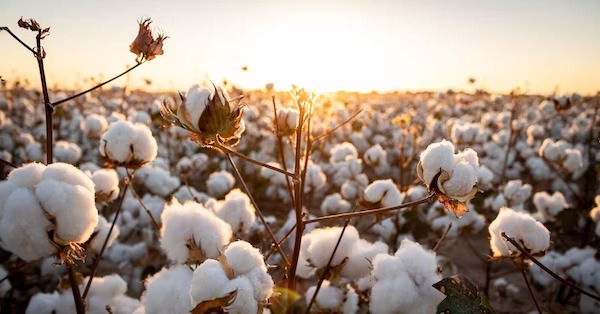How to reap more yield from Cotton Cultivation?
January 5, 2024Cotton is one of the most important fiber and cash crops of India as well as of the entire world. It plays a dominant role in the industrial and agricultural economy of the country. It provides the basic raw material to cotton textile industry. In India it provides direct livelihood to 6 million farmers and about 40-50 million people are employed in cotton trade and its processing. Cotton is a water-thirsty crop and around 6% of the water for irrigation in is used for its cultivation. In India, it is grown on a large scale in Maharashtra, Gujarat, Karnataka, Madhya Pradesh, Punjab, Rajasthan, Haryana, Tamil Nadu and Uttar Pradesh. Gujarat is the largest producer of cotton followed by Maharashtra and Punjab. It is vital kharif crop of Punjab. The average lint yield of the State is around 697 kg per hectare.
SOIL:
It can be grown on all types of soil having pH ranges in-between 6 and 8. Deep, friable, well-drained and fertile soil is good for crop cultivation. Sandy, saline, or water-logged soils are not suitable for cotton cultivation. The depth of soil should not be less than 20-25 cm.
POPULAR VARIETIES WITH THEIR YIELD
Goldi-333 BGII Hybrid Cotton Seeds:
Nagraj BGII Hybrid Cotton Seeds:
V-Sport BGII Hybrid Cotton Seeds
Krishna Seeds Farm is an R and D-based reputed seed company. We have developed, produced, and done marketing of Bollgard II Bt cotton hybrid seeds in India. Goldi-333 BGII is one of the Premium and excellent performer hybrid. This hybrid is highly adaptable to almost all cotton-growing states as well as suitable for cultivation under varied soil types, irrigation conditions, and agronomic practices. Its medium-duration maturity is preferred by farmers who want to undertake subsequent Rabi crops or who have limited irrigation.
Bollgard II Bt Hybrid Cotton Seeds.
Variety: KCHH-2725 BGII, Bollgard II Bt Hybrid Cotton Seeds.
Germination: 75%,
Weight: 475 Gram,
Higher Yield
Medium Duration Maturity.
LAND PREPARATION:
It required thorough land preparation for good germination and growth of crops. After removal of the Rabi crop, irrigate the field immediately then take ploughing of land with MB plough and planking. Carry out deep plowing once in three years, it will help to keep a check on perennial weeds and also kill various soil-borne pests and diseases.
SOWING:
Time of sowing:
The optimum time for sowing is in April - mid May. For Management of Mealybug, sow Bajra, Arhar, Maize and Jowar in the fields surrounding cotton crop. Avoid growing tur, moong and bhendi in and around cotton field as these harbour insect pests. In Punjab cotton wheat rotation is common but rotation with berseem and clusterbean has been found to have beneficial effect on the succeeding cotton crop.
Spacing
For American cotton use spacing of 75x15 cm under irrigated condition while under rain fed condition use spacing of 60x30 cm. For desi cotton use spacing of 60x30 cm for rain fed as well as for irrigated condition.
Sowing Depth
Sowing should be done at a depth of 5 cm.
Method of sowing
For sowing use a seed drill for desi cotton while dibbling of seed is done in the case of hybrids and Bt cotton. Square planting is beneficial compared to rectangular planting. Few gaps arise due to failure of seed germination and mortality of seedlings. To overcome this gap filling is necessary. Two weeks after sowing the weak/diseased/damaged seedlings should be removed by keeping a healthy seedling/hill.






Guest reviews
No reviews found for this Blog